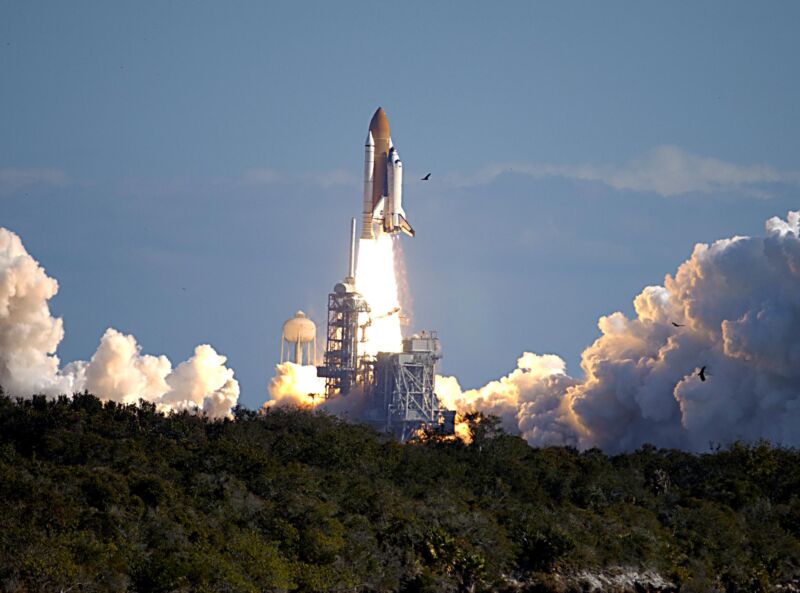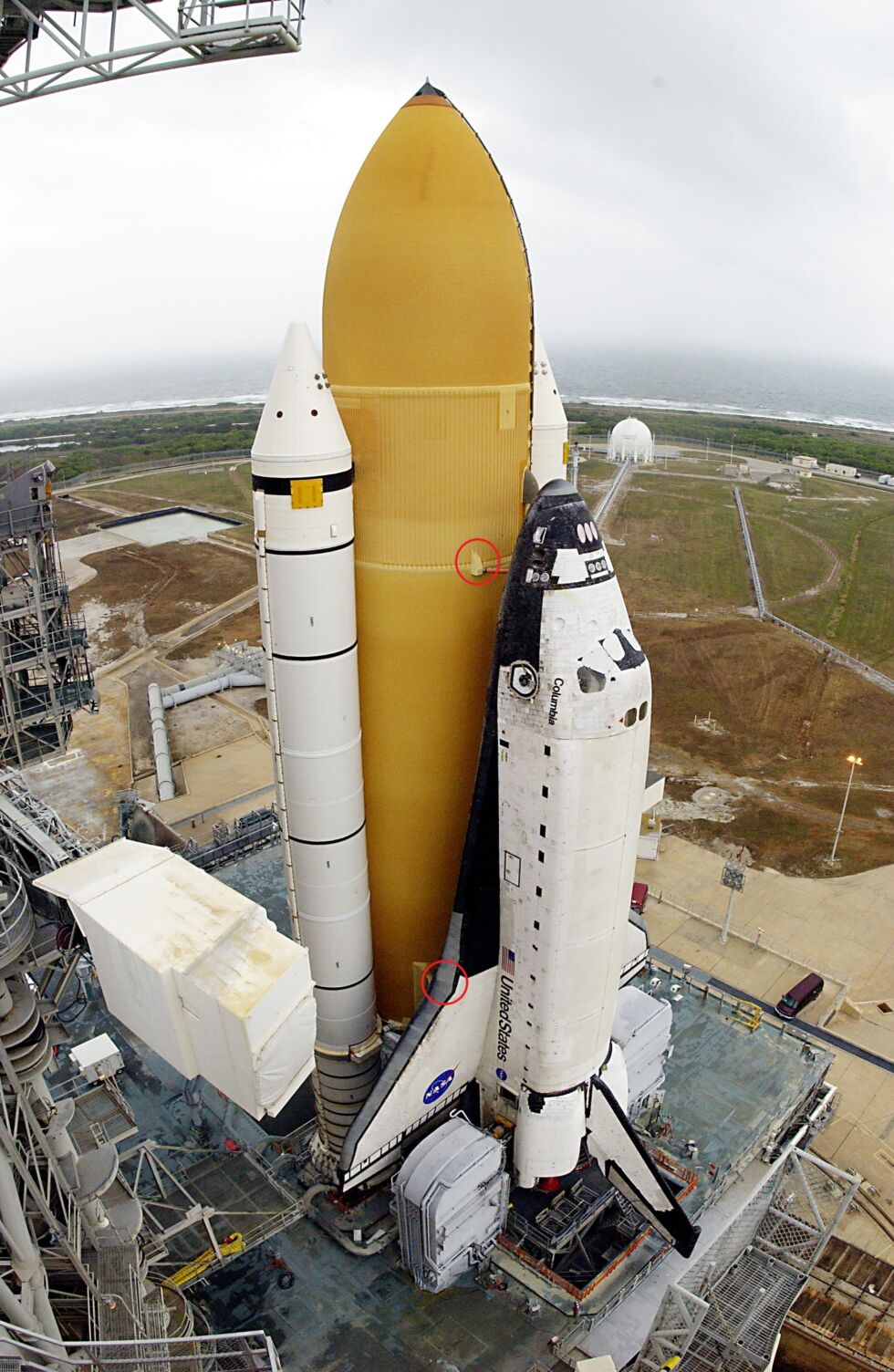
Leaden skies and chilly air greeted Milt Heflin 20 years ago today when he pulled into the large parking lot outside Mission Control at Johnson Space Center in Houston.
Although space shuttle Columbia was due to return to Earth after a two-week mission, the center was quiet on a Saturday morning. When Heflin, chief of the flight director office at NASA, walked into Mission Control, he found the observation room nearly empty. While the shuttle's seven astronauts made their final preparations to enter Earth's atmosphere, Heflin chatted amiably with the room's only other occupant, a mission operations chief named Ron Epps.
Through large glass windows, the two looked out over Mission Control. As the shuttle's ground track began to cross over the United States, making its approach across the southern tier of states toward Florida, Heflin began to sense that all was not well. "I got the feeling that something was not right from the movements of the flight controllers," he said.
Heflin and Epps quieted themselves and listened to the mission audio more closely. Soon, they saw the mission operations director, John Shannon, hastily get up from his position behind the flight director and grab a large notebook that contained the flight contingency procedures. Shannon exited Mission Control and moments later entered the viewing room. Heflin knew where Shannon was headed: to the nearby suite of Johnson Space Center Director Jefferson D. Howell.
As Shannon passed through the viewing room, Heflin asked, "John, what's up?"
Shannon offered a simple answer, "We lost them."
He was referring to the seven astronauts on board Columbia—Commander Rick Husband, Pilot William C. McCool, and specialists Michael P. Anderson, Kalpana Chawla, David M. Brown, Laurel Clark, and Ilan Ramon. They died at about 9 am local time due to a failure of the shuttle's thermal protection system, caused by a chunk of foam that had struck the spacecraft's wing two weeks earlier during launch. First, the shuttle's crew cabin suffered a depressurization, followed by a violent rotation of the vehicle and hot gasses entering the spacecraft as it flew over Texas.
This happened 20 years ago, on February 1, 2003. In recounting that terrible morning, Heflin choked up. "It still breaks me up today," he said during a recent interview.
Broken safety culture
The loss of the space shuttle was a wrenching tragedy for NASA, the nation, and the world. Mission specialist Chawla was born in India before she moved to the United States in 1982. Payload Specialist Roman was the first Israeli astronaut.
The shuttle would be grounded for more than two years, and it was only brought back in August 2005 so that NASA could use its capacious payload bay to complete the construction of the International Space Station. In 2011, the winged vehicle was retired for good.
For NASA, the resulting analysis from the Columbia Accident Investigation Board produced a damning indictment of the agency's safety culture.
"Cultural traits and organizational practices detrimental to safety were allowed to develop," the report stated. NASA engineers and decision-makers relied on past successes with the shuttle as a substitute for sound engineering practices. Moreover, organizational barriers stifled differences of opinion and made it difficult for lower-level employees to bring forward safety concerns to management.
Simply put, NASA had gotten complacent.

In Columbia's case, managers had observed foam falling off the shuttle's external tank during many previous launches. It had not caused serious damage to the space shuttle before, so why should it this time? And while there were some concerns about this particular foam incident—lower-level engineers at NASA on three occasions requested images of a potentially damaged shuttle in space from US Department of Defense satellites—they were never acted upon by senior managers. Transcripts of meetings of Columbia's Mission Management Team, chaired by Linda Ham, revealed virtually no discussion of the issue.
So the fatal damage to the orbiter's left wing was not discovered until after it was far too late to save seven astronauts on board Columbia. They became the third major loss of crew in the space agency's history.


3175x175(CURRENT).thumb.jpg.b05acc060982b36f5891ba728e6d953c.jpg)

Recommended Comments
There are no comments to display.
Join the conversation
You can post now and register later. If you have an account, sign in now to post with your account.
Note: Your post will require moderator approval before it will be visible.